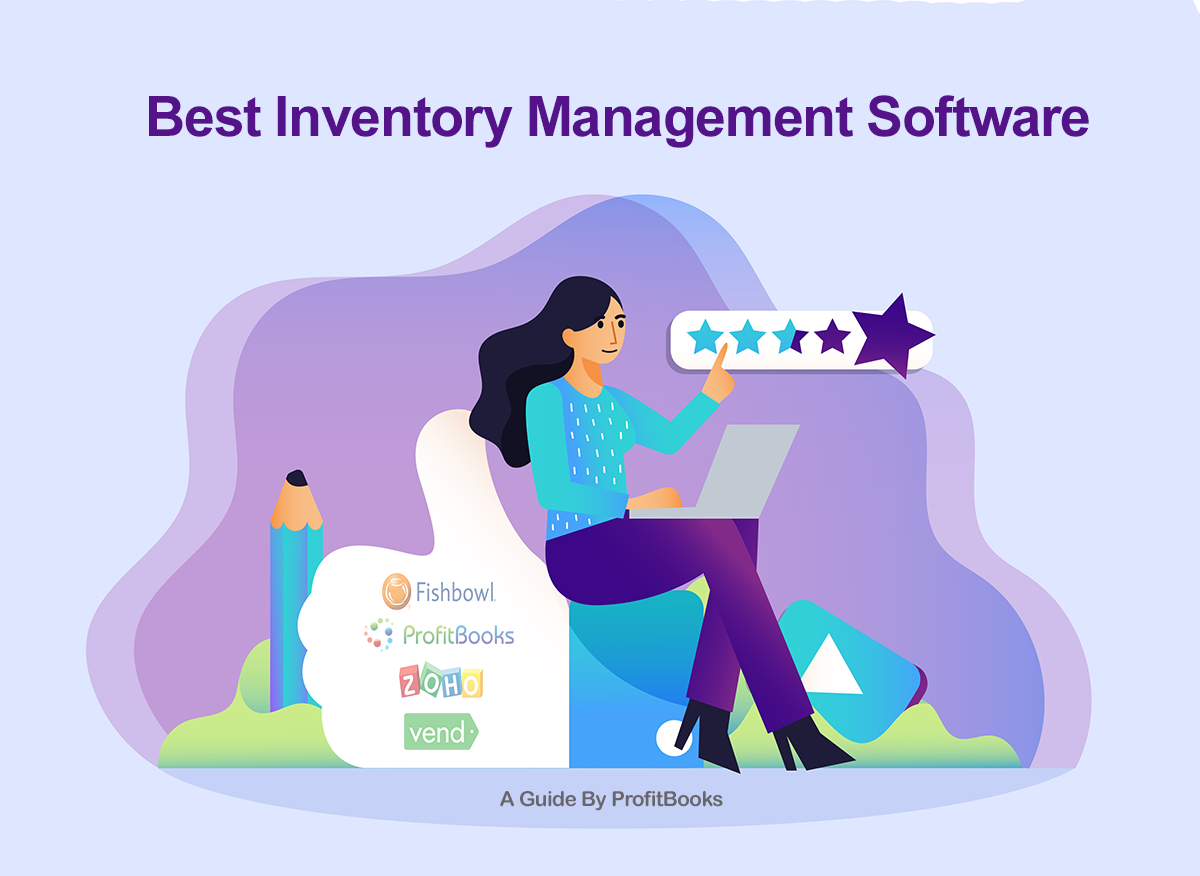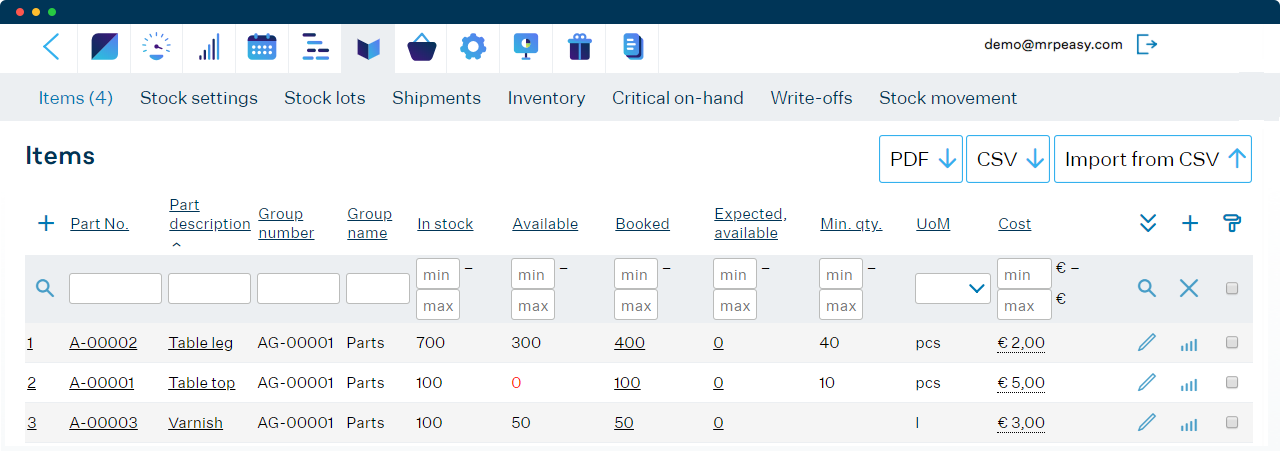Small business manufacturing inventory software is a crucial tool for small businesses in the manufacturing industry. It helps businesses manage their inventory efficiently, reducing costs, improving customer satisfaction, and increasing productivity.
Inventory management software for small businesses typically includes features such as inventory tracking, purchase order management, and reporting. These features help businesses keep track of their inventory levels, manage their suppliers, and make informed decisions about their inventory.
Small Business Manufacturing Inventory Software
Inventory management is a crucial aspect for small manufacturing businesses to streamline their operations, reduce costs, and improve efficiency. Dedicated software solutions can help businesses gain real-time visibility into their inventory levels, optimize stock levels, and enhance overall supply chain management.
Core Features and Functionalities
Small business manufacturing inventory software typically offers a range of core features and functionalities designed to meet the specific needs of these businesses. Some common features include:
- Inventory Tracking: Real-time tracking of inventory levels, including raw materials, work-in-progress, and finished goods.
- Stock Management: Automated stock replenishment, safety stock level management, and inventory forecasting to prevent stockouts and overstocking.
- Warehouse Management: Support for multiple warehouses, bin locations, and inventory transfers to optimize storage and retrieval.
- Production Planning: Integration with production schedules to ensure availability of raw materials and components.
- Reporting and Analytics: Comprehensive reporting and analytics to provide insights into inventory performance, identify trends, and make informed decisions.
Benefits of Using Small Business Manufacturing Inventory Software

Inventory management software can bring a wealth of benefits to small business manufacturers. By streamlining inventory processes, reducing costs, and improving customer satisfaction, these solutions can help businesses operate more efficiently and profitably.
Here are some specific examples of how small business manufacturers can benefit from using inventory management software:
Improved Efficiency
- Reduced time spent on manual inventory tasks: Inventory management software can automate many of the time-consuming tasks associated with inventory management, such as tracking inventory levels, generating purchase orders, and processing invoices.
- Improved accuracy: Automated inventory management systems are less prone to errors than manual systems, which can lead to improved inventory accuracy and reduced losses due to overstocking or understocking.
- Increased visibility into inventory levels: Inventory management software provides real-time visibility into inventory levels, which can help businesses make better decisions about production planning, purchasing, and customer orders.
Reduced Costs
- Reduced inventory carrying costs: Inventory management software can help businesses reduce their inventory carrying costs by optimizing inventory levels and reducing the risk of overstocking.
- Reduced labor costs: By automating many of the tasks associated with inventory management, inventory management software can help businesses reduce their labor costs.
- Reduced waste: Inventory management software can help businesses reduce waste by preventing overstocking and spoilage.
Enhanced Customer Satisfaction
- Improved order fulfillment: Inventory management software can help businesses improve their order fulfillment rates by ensuring that they have the right products in stock to meet customer demand.
- Reduced backorders: Inventory management software can help businesses reduce backorders by providing real-time visibility into inventory levels and enabling them to make better decisions about production planning and purchasing.
- Improved customer service: Inventory management software can help businesses improve their customer service by providing them with the information they need to answer customer inquiries about product availability and delivery times.
Key Considerations for Selecting Small Business Manufacturing Inventory Software
When selecting inventory management software for your small business, there are several key factors to consider to ensure you choose the best solution for your specific needs.
Scalability
As your business grows, your inventory management needs will likely change. Choose software that can scale with your business, allowing you to add more users, products, and locations as needed.
Implementation and Best Practices for Small Business Manufacturing Inventory Software

Implementing and using inventory management software effectively can help small manufacturing businesses optimize their operations, reduce costs, and improve customer satisfaction. Here’s a step-by-step guide to implementing inventory management software and some best practices for optimizing its usage.
Implementation Guide
- Assess your needs: Determine the specific requirements of your business, including the size and complexity of your inventory, the types of products you manufacture, and your desired level of automation.
- Choose the right software: Research and compare different inventory management software solutions to find one that meets your specific needs and budget.
- Prepare your data: Gather and organize your inventory data, including product descriptions, quantities, locations, and costs.
- Implement the software: Follow the software vendor’s instructions to install and configure the software on your computer systems.
- Train your staff: Provide training to your staff on how to use the software effectively, including how to enter and manage inventory data, generate reports, and perform audits.
- Monitor and adjust: Regularly review your inventory data and adjust the software settings as needed to ensure accuracy and efficiency.
Best Practices
- Maintain data accuracy: Regularly review and update inventory data to ensure it is accurate and up-to-date. This includes verifying physical inventory counts against software records and correcting any discrepancies.
- Conduct regular audits: Perform regular audits of your inventory to identify any discrepancies or errors. This will help you maintain data accuracy and prevent potential losses.
- Train your staff: Provide ongoing training to your staff on how to use the software effectively. This will help them understand the importance of data accuracy and how to use the software to its full potential.
- Use the software’s reporting features: Generate regular reports from the software to track inventory levels, identify trends, and make informed decisions about inventory management.
- Integrate with other systems: If possible, integrate your inventory management software with other business systems, such as your accounting or ERP system. This will help you streamline your operations and improve data accuracy.
Case Studies and Success Stories of Small Businesses Using Manufacturing Inventory Software
Small manufacturing businesses can significantly benefit from implementing inventory management software. Real-world examples showcase how these solutions have helped businesses overcome challenges and streamline operations.
By providing real-time visibility into inventory levels, these software systems enable businesses to optimize stock levels, reduce waste, and improve customer service. Let’s explore some success stories of small businesses that have successfully implemented manufacturing inventory software.
Success Story: ABC Manufacturing
ABC Manufacturing, a small-scale metal fabrication company, struggled with manual inventory tracking. The process was time-consuming and prone to errors, leading to stockouts and overstocking. After implementing an inventory management software, ABC Manufacturing experienced:
- Reduced inventory carrying costs by 20%
- Improved customer satisfaction by eliminating stockouts
- Increased productivity by automating inventory processes
Success Story: XYZ Electronics
XYZ Electronics, a small electronics manufacturer, faced challenges with managing multiple warehouses and complex inventory items. The company implemented a cloud-based inventory management software that:
- Provided real-time inventory visibility across all warehouses
- Enabled efficient inventory allocation and replenishment
- Reduced inventory shrinkage by implementing barcode scanning and cycle counting
Emerging Trends and Future Developments in Small Business Manufacturing Inventory Software

The landscape of small business manufacturing inventory software is constantly evolving, driven by technological advancements and changing industry needs. Here are some of the latest trends and innovations shaping the future of this software:
Artificial Intelligence (AI)
AI is revolutionizing inventory management by automating tasks, improving accuracy, and providing valuable insights. AI-powered inventory software can:
- Predict demand and optimize inventory levels based on historical data and real-time trends.
- Identify and flag potential inventory issues, such as shortages or overstocks.
li>Provide personalized recommendations for inventory replenishment and optimization.
Cloud Computing
Cloud computing is enabling small businesses to access robust inventory management software without the need for expensive on-premises infrastructure. Cloud-based inventory software offers:
- Scalability to accommodate growing businesses and fluctuating inventory needs.
- Enhanced security measures to protect sensitive inventory data.
- Remote access for real-time inventory visibility and management.
Internet of Things (IoT)
IoT devices, such as sensors and RFID tags, are connecting inventory items to the digital world. This enables real-time tracking of inventory levels, location, and condition. IoT-integrated inventory software can:
- Automate inventory updates as items are received, shipped, or moved.
- Provide alerts for low stock levels or equipment malfunctions.
- Improve inventory accuracy and reduce shrinkage.
Predictive Analytics, Small business manufacturing inventory software
Predictive analytics uses machine learning algorithms to analyze historical data and identify patterns. This enables inventory software to forecast future demand, optimize inventory levels, and reduce the risk of stockouts or overstocking.
Last Word
Overall, small business manufacturing inventory software is a valuable tool for small businesses in the manufacturing industry. It can help businesses improve their efficiency, reduce costs, and improve customer satisfaction.
Frequently Asked Questions
What are the benefits of using small business manufacturing inventory software?
Small business manufacturing inventory software can provide a number of benefits, including improved efficiency, reduced costs, and enhanced customer satisfaction.
How do I choose the right small business manufacturing inventory software?
When choosing small business manufacturing inventory software, there are a number of factors to consider, such as the size of your business, your industry, and your budget.
How do I implement small business manufacturing inventory software?
Implementing small business manufacturing inventory software is a relatively straightforward process. However, it is important to follow the instructions carefully and to test the software thoroughly before going live.